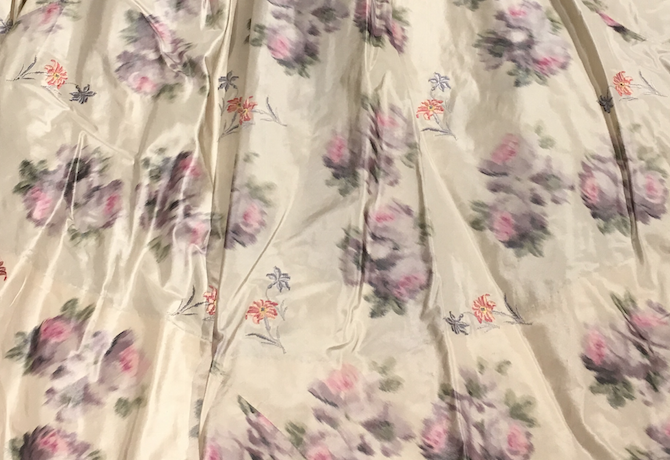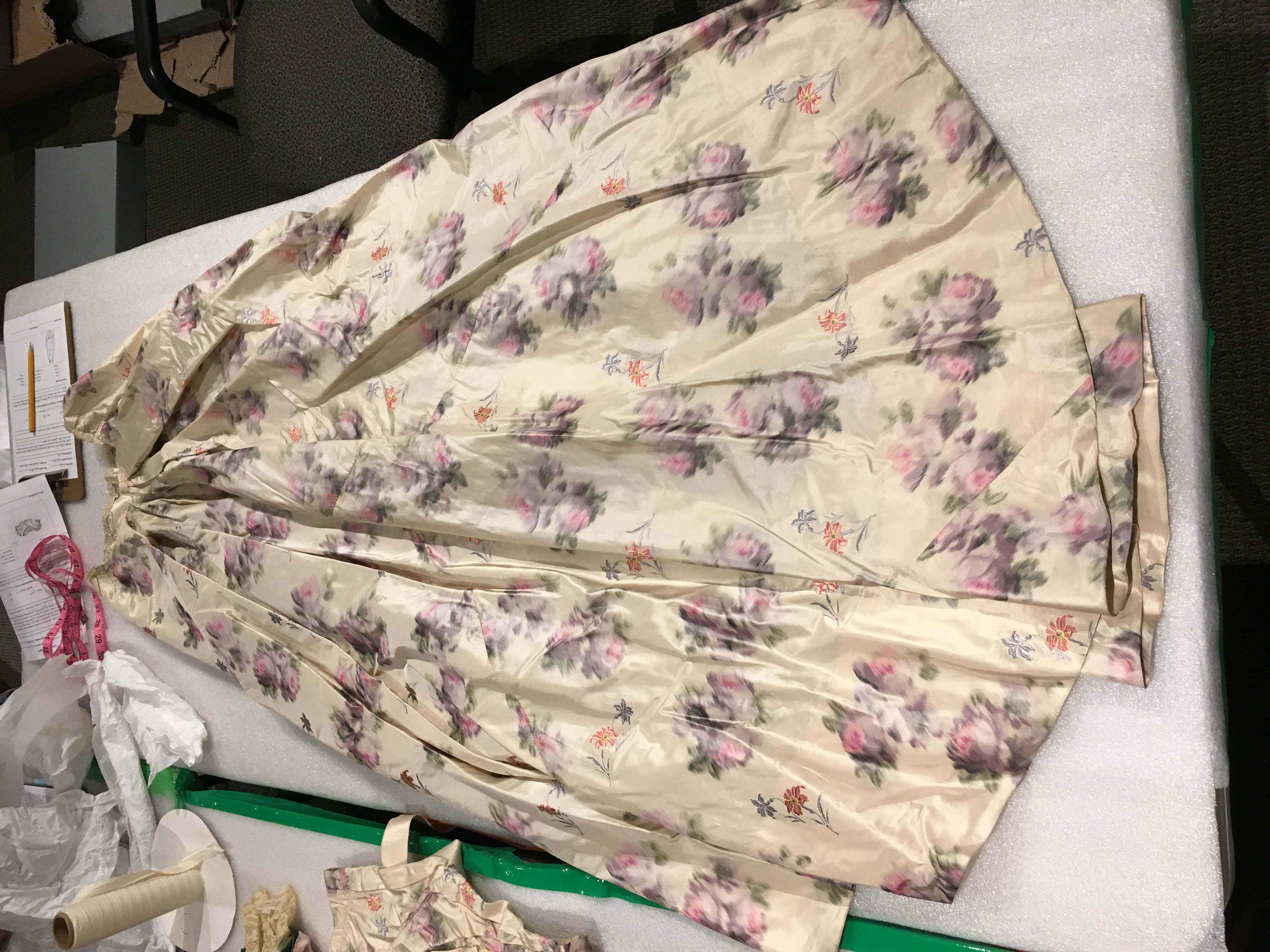Bold Prints, Ikat and Chiné Silk
AnnaLivia McCarthy, 2019 Fashion Archives Intern
When peeking into the boxes of the Fashion Archives at MdHS, one aspect of costume that always strikes me is the complexity of prints and patterns. Sometimes between layers of tissue, my first impression of a dress is only a glimpse of a spectacular floral motif or stripe. This was the case when I saw this 1890s dress constructed from 1850s chiné silk.

detail, chiné silk dress, ca. 1890s with 1850s fabric, Maryland Historical Society, Gift of , 1972.81.50 A-B
In the mid-nineteenth century, chiné became a popular form of warp-printed silk. The origin of the name chiné derives from a Western misunderstanding of ikat, the Indonesian word for this traditional resist dyeing-technique. To achieve the meticulously planned patterns, the yarns are tie-dyed prior to weaving. Dye resistant material coats the yarns at specific lengths so that when dyed and woven, the exposed yarn correspond to patterns. When the loom is warped with parallel, vertical yarns, the pattern begins to appear. For the alignment to be completed, warp and weft must be interlaced with precision. The result is a blurred, cloudy effect between changes in color, a highly desirable aesthetic.

In Western fashion, the look of these distinct edges were admired and then copied. Ikat dyeing inspired later chiné silk, which can be seen in this dress recently processed by the 2019 Fashion Archives Interns.
 |
 |
Left bodice, Right skirt, chiné silk dress, ca. 1890s with 1850s fabric, Maryland Historical Society, Gift of , 1972.81.50 A-B
This dress is interesting not only because of its delicate pastel ikat, but also because of the floral embroidery woven into the textile. The blurred nature of the ikat print lends itself well to natural motifs including flower petals and leaves. The embroidery is also representing a floral motif, but the edges are crisp in contrast to the ikat pattern.
This 1760s-1770s dress from the Metropolitan Museum of Art, also demonstrates an ikat pattern, but one that is more abstract and obscured by a woven stripe.
Some fashion historians differentiate ikat and chiné based on the application of color. Ikat prints are created by dyeing portions of yarn, whereas some chiné silk is woven from yarns that were printed with color. In both techniques the color is applied prior to weaving, which makes them structurally similar and equally complex.
References
Phipps, Elena. 2011. Looking at Textiles: A Guide to Technical Terms.
Greene, Susan W. 2014. Wearable Prints, 1760-1860: History, Materials, Mechanics


